From the July/August issue of Apollo: preview and subscribe here
A journey to the heart of distant cultures need not involve hacking through jungle or canoeing up the Amazon. For the less intrepid, a trip to Paris in September will suffice. Parcours des Mondes celebrates its 14th edition this year (8–13 September), and sees some 50 international dealers join forces with fellow gallerists in Saint-Germain-des-Prés – 84 in total – to present a sequence of exhibitions that snakes around the small streets in a trail of orange banners and pavement signs.
Under the direction of Pierre Moos, Parcours des Mondes has evolved into the most important commercial tribal art event in the world, drawing more than 10,000 visitors. It also continues to open up and explore new terrain. Last year saw the addition of a few dealers in classical, Egyptian and Near Eastern antiquities as well as Southeast Asian and Asian art. This time out the latter group has been expanded to develop a parallel initiative. Moos sees the International Asian Art Fair, also under the Parcours des Mondes umbrella, as a natural evolution of the tribal art initiative. ‘There were three dealers in Asian art last year and they sold everything. I thought: “New York and London have an Asia Week – why not Paris?”’
What is particularly enjoyable about this open-house event is that the exhibitors make best use of their often limited space by staging highly focused exhibitions. Such concentrations of high-quality material and high-octane enthusiasm from the world’s greatest and most knowledgeable dealers make for memorable and instructive encounters. There will be around 30 thematic shows this year, many accompanied by well-illustrated and scholarly catalogues.
California-based Michael Hamson Oceanic Art, for instance, is presenting ‘Art of the Abelam’ (5 rue Jacques Callot). As Hamson explains: ‘While the Abelam are one of the most prolific art-producing cultures in Papua New Guinea, there really has been no significant museum or commercial exhibition dealing exclusively with this art. This has been my speciality these last 20 years, and I am finally ready to put on the exhibition and publish the catalogue I always wished to do.’ He is focusing primarily on pre-contact pieces, and drawing from the collection he has amassed over the last two decades. Included will be ancestral figures, yam masks, bone daggers, drums and items of personal decoration. A tour de force is a 19th-century carved ancestor spirit figure standing almost three metres high.
New York dealer Donald Ellis is mounting ‘Keeping Time: Plains Indian Ledger Drawings 1865–1900’ – the largest exhibition ever staged in Europe on the subject and a particular treat for those who missed Ellis’s revelatory display at last year’s Frieze Masters (12 rue des Beaux-Arts). These drawings emerged out of the tribes’ hide-painting traditions, when braves were literally cloaked in their own histories. These hides commemorated acts of valour and the acquisitions of status, and as the buffalo herds were systematically depleted, artist-historians began to use in place of hides the ruled pages of ledger books. Working with coloured pencils and sometimes ink or watercolour, these works tell tales of horsemanship, inter-tribal warfare, camp life and courtship. Moreover, they exhibit a verve and immediacy as well as a strange pictorial expansion of time and space that is quite extraordinary.
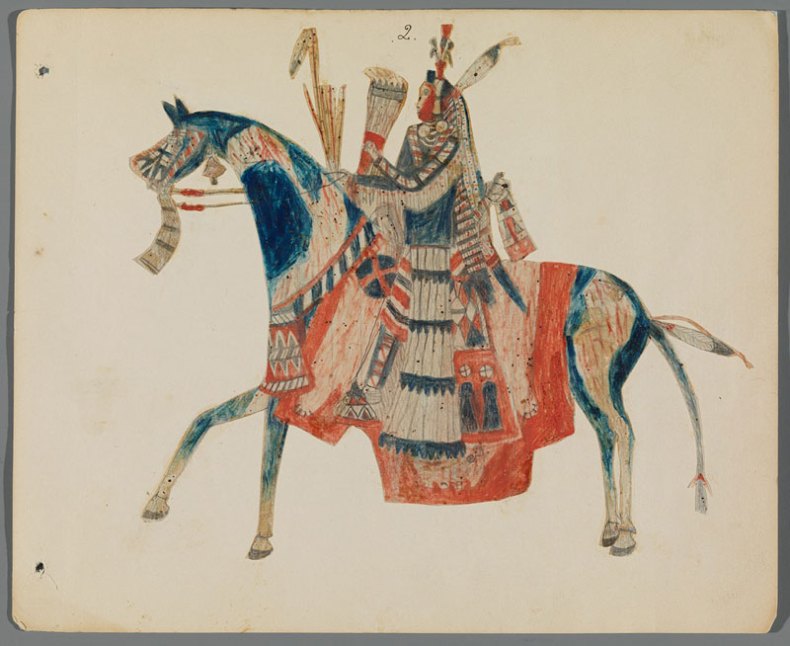
Ledger drawing (c. 1890), Crow, Northern Plains, watercolour, graphite and coloured pencil on paper, 20.3 x 25.1cm. Donald Ellis
Another highlight comes courtesy of Indonesian and tribal specialist Thomas Murray, who stages ‘Classical Dayak Art of Borneo’ (3 rue des Beaux-Arts). The show examines sculptures and textiles from antiquity to the early 20th century and encompasses work of widely different scale, from the smallest charms to giant guardian figures. Barcelona-based David Serra brings together a corpus of bronzes produced by the Lhoron, talented metal smelters whose techniques are thought to have originated in the Inner Niger Delta, central Mali, at the beginning of the 15th century (38 rue de Seine). Brussels dealer Dartevelle is offering an insight into a little known and rarely studied tribe: the Mambila of Nigeria. It brings to the fair the Picha collection, which was assembled over a 25-year period (6 rue Jacques Callot).
New exhibitor Finch & Co. adds an extra dimension to the event by introducing its trademark cabinets of curiosities (3 rue Jacques Callot). At the core of the London dealer’s Kunstkammern are rare and striking tribal pieces, such as this 18th-century Nuu Chah-Nulth chief’s whalebone sword club. The handle is carved with the stylised profile of an open-beaked thunderbird and the blade decorated with an abstracted figure. Alongside this piece will be natural history specimens and European works of art.
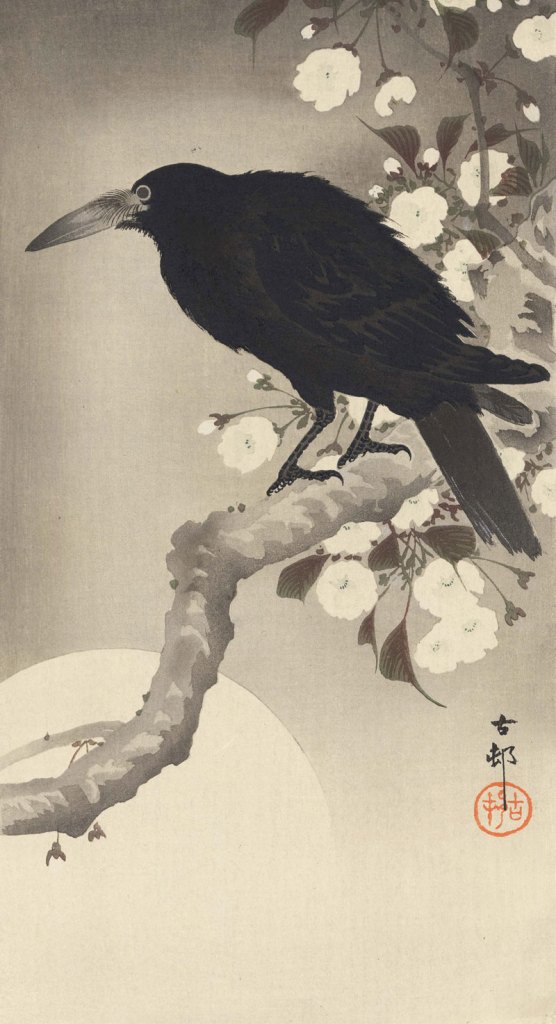
Raven on a cherry tree branch (c. 1900), Ohara Koson (1877–1945), nishiki-e print, 36.9 x 19.4cm. Tanakaya
Other dealers focus on specific objects or themes. Normandy dealer Galerie Dodier presents ‘Of Dance and of War’, which features some 50 Melanesian ritual spears (35–37 rue de Seine). Paris-based specialist Lucas Ratton presents a charming thematic exhibition on animals at his premises (33 rue de Seine). Also focusing on the symbolic significance of elements of the natural world is another of this year’s new exhibitors, Japanese print dealer Tanakaya. Its space at 4 rue Saint-Sulpice hosts the elegant exhibition ‘Ka Cho Fû Getsu’ (flowers, birds, landscape and the moon), and includes 19th- and 20th-century works by Hiroshige, Zeshin, Kyōsai and Koson, among others.
Parcours des Mondes takes place in the galleries around Saint-Germain-des-Prés, Paris, from 8–13 September.
Click here to buy the latest issue of Apollo
Unlimited access from just $16 every 3 months
Subscribe to get unlimited and exclusive access to the top art stories, interviews and exhibition reviews.

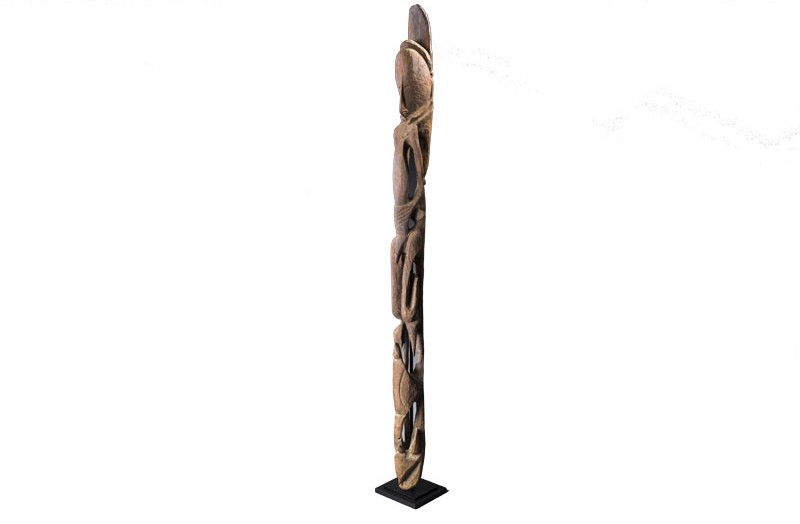
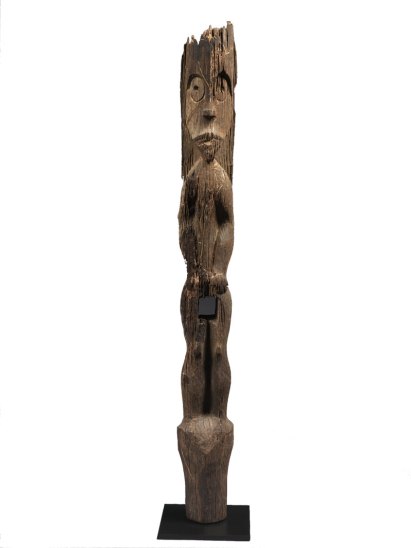
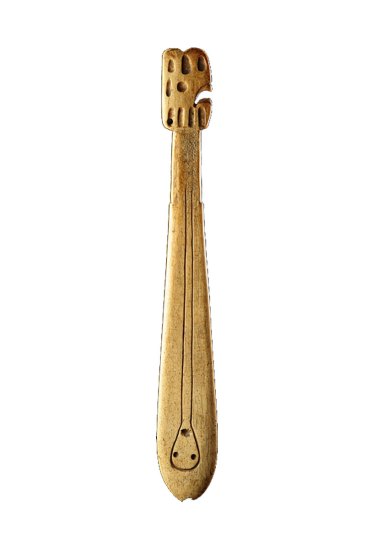
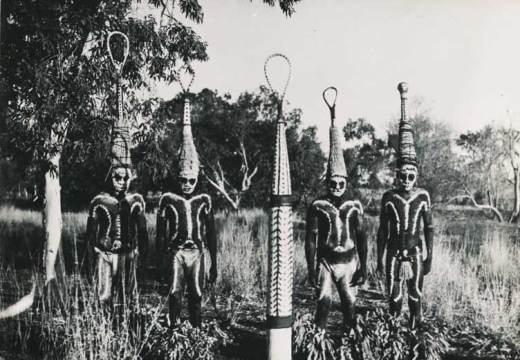
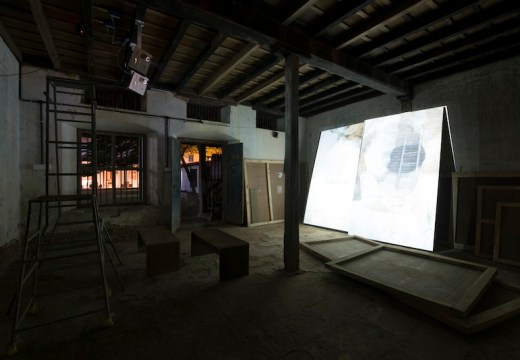
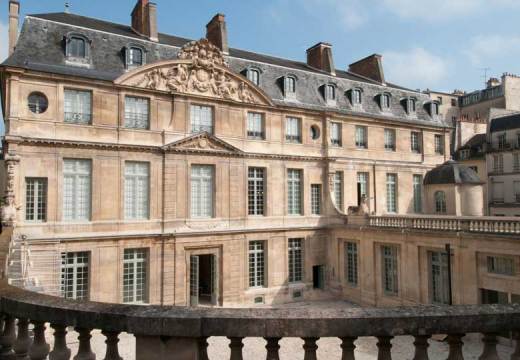









![Masterpiece [Re]discovery 2022. Photo: Ben Fisher Photography, courtesy of Masterpiece London](http://www.apollo-magazine.com/wp-content/uploads/2022/07/MPL2022_4263.jpg)
It’s time for the government of London to return to its rightful home